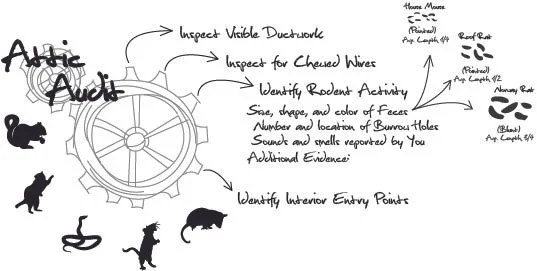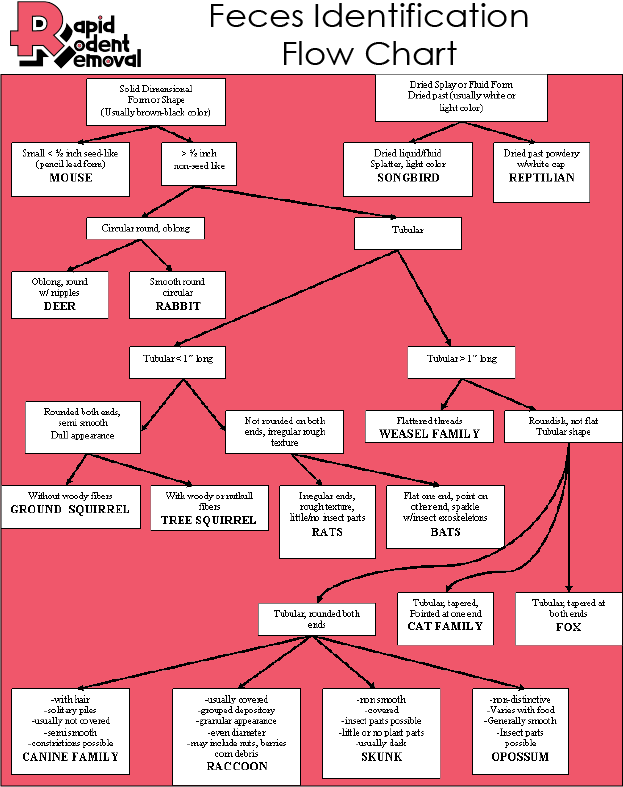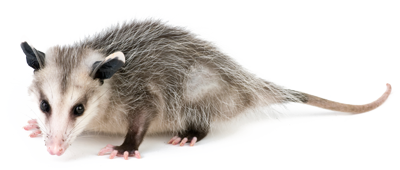WHERE DO RACCOONS LIVE
WHERE DO RACCOONS LIVE
Raccoons, with their bandit-like masks and dexterous paws, are among the most recognizable and adaptable mammals in North America. But beyond their distinctive appearance and curious behaviors lies a fascinating question: Where do raccoons live? Understanding the habitat preferences of raccoons isn’t just about satisfying curiosity—it’s essential for wildlife management, urban planning, pest control, and environmental education.
This book is a comprehensive journey into the many environments raccoons call home. From lush forests and marshy wetlands to bustling cities and cozy suburban neighborhoods, raccoons have proven themselves to be master adapters. Their ability to thrive in a diverse array of habitats has made them one of the most widespread and sometimes problematic animals in both rural and urban settings.
Originally native to North and Central America, raccoons have expanded their territories significantly. Today, they can be found in parts of Europe and Asia, often as invasive species introduced by humans. Their success in such varied climates and landscapes can be attributed to their omnivorous diet, excellent climbing and swimming abilities, and intelligence, which helps them navigate human environments as easily as natural ones.
In the forests of the Appalachian Mountains, raccoons may den in hollow trees, feeding on insects, fruits, and small animals. In the wetlands of Louisiana, they fish for crayfish and frogs, thriving near the water. In the suburbs of Chicago or Toronto, they raid garbage bins, nest in attics, and become notorious nocturnal visitors to backyards and gardens.
Yet this adaptability comes at a cost. As raccoons move into more human-dominated areas, conflicts arise. Homeowners worry about damage to property, health concerns from feces or parasites, and safety for pets and small children. Wildlife managers grapple with how to balance raccoon populations without harming ecosystems or causing undue distress to the animals.
This book seeks to answer not only where raccoons live, but also why they choose those places and how we can better understand their relationship to our shared spaces. Each chapter is packed with scientific insight, real-world observations, and practical tips—from how to recognize raccoon dens to strategies for humane removal and exclusion.
Whether you're a wildlife enthusiast, a homeowner dealing with a raccoon problem, or simply fascinated by these clever creatures, this guide will illuminate the surprising and often hidden world of raccoon habitats.
Let’s begin our exploration by diving into the landscapes raccoons originally called home—North America’s diverse and rich ecosystems
Introduction to Raccoon Habitats
Raccoons (Procyon lotor) are remarkable mammals known for their adaptability, intelligence, and curious nature. One of the most intriguing aspects of these creatures is their flexibility in terms of habitat. Whether navigating dense forests, prowling along riverbanks, or rummaging through urban trash bins, raccoons have proven that they can thrive in a wide array of environments.
Understanding Habitat Basics
To understand where raccoons live, we must first define what makes a habitat suitable. A raccoon habitat must provide three essential elements:
Food: Raccoons are opportunistic omnivores, which means they eat a little bit of everything—fruits, nuts, insects, small animals, garbage, and pet food.
Water: Access to freshwater is critical. Raccoons often live near lakes, streams, rivers, or wetlands.
Shelter: Raccoons require secure, dry spaces to rest, breed, and raise their young. This could be a hollow tree, an abandoned burrow, or a crawlspace under someone’s porch.
A Flexible Survivor
The flexibility of raccoons in choosing their homes is almost unmatched in the animal kingdom. Originally forest dwellers, they have adapted over time to a host of other environments. Their ability to solve problems, open containers, climb, swim, and make use of available resources makes them highly successful in various habitats.
In rural areas, raccoons might live miles away from any human activity. In contrast, in urban environments, raccoons might sleep in an attic during the day and feast on leftover pizza crusts at night.
Historical Context
Historically, raccoons were most common in deciduous forests of the eastern United States, where tall trees and abundant streams made for ideal living conditions. Over time, however, raccoons expanded westward and northward. Today, raccoons are found as far north as Canada’s boreal forests and as far south as Panama.
In the 20th century, raccoons were introduced into parts of Europe and Asia, often by fur traders. They have since established feral populations in Germany, Russia, and Japan, adapting quickly to unfamiliar environments.
Habitat Use Across Life Stages
Raccoons modify their habitat use depending on their life stage. Juveniles, for instance, may stay close to the natal den until they are independent, while adult males may roam over a larger territory. Females with young kits tend to seek more concealed and secure nesting spots to avoid predators and environmental stress.
Raccoons in North America: Their Native Range
North America is the native homeland of the raccoon. These adaptable mammals originated in the dense woodlands, marshes, and river valleys of the southeastern United States. Over time, they expanded their range, aided by their remarkable adaptability and changing landscapes shaped by human activity.
Original Range and Expansion
Historically, raccoons were most abundant in the southeastern United States. The combination of deciduous forests, abundant water sources, and a rich diversity of food made these regions ideal. As European settlers transformed the landscape—clearing forests, planting crops, and building roads—raccoons found new niches to explore.
By the 20th century, raccoons had spread across almost every state and into southern Canada and northern Mexico. Today, they are common from the forests of Quebec to the deserts of Arizona and from the bayous of Louisiana to the Pacific Northwest.
Habitat Diversity in North America
Raccoons in North America can be found in:
Eastern deciduous forests, where they forage among oak, maple, and hickory trees.
Midwestern farmlands, where they feast on corn, soybeans, and field mice.
Southern wetlands, rich in amphibians, crayfish, and aquatic plants.
Northern boreal forests, where survival means denning in insulated spaces and foraging in cold climates.
Behavior and Adaptation
Despite regional differences in climate and geography, raccoons across North America exhibit core behaviors—nocturnal foraging, denning in secure places, and opportunistic feeding. In northern regions, they may hibernate or enter torpor to conserve energy in winter. In warmer climates, they remain active year-round.
Raccoons have shaped—and been shaped by—the North American environment. Their native range is vast, but their success has not diminished the importance of understanding their role in local ecosystems, where their population density can affect both biodiversity and human communities.
Urban Raccoons: Adapting to City Life
Urban environments present unique challenges and opportunities for wildlife. Raccoons, however, have not just adapted to city life—they’ve thrived in it.
The Urban Jungle
Cities provide abundant food sources: trash cans, compost bins, pet food, and even bird feeders. Raccoons are skilled at raiding these sources, often learning how to bypass human deterrents like bungee cords or latches.
Shelter is equally plentiful. Raccoons use attics, abandoned buildings, sewers, and chimneys as dens. Their climbing skills allow them to navigate rooftops and fences with ease.
Nocturnal Navigators
In urban areas, raccoons are more nocturnal than their rural counterparts. They typically avoid human activity and travel along "green corridors" such as alleyways, railroad tracks, and rivers to minimize detection.
Increased Intelligence
Studies show that urban raccoons display enhanced problem-solving abilities compared to rural raccoons. They learn how to open containers, navigate obstacles, and remember solutions to access food. This increased intelligence also makes them harder to trap or deter.
Human Conflicts
Urban raccoons often cause property damage by tearing soffits or insulation. They also pose health risks by spreading diseases like raccoon roundworm. Yet some city dwellers view them with curiosity or affection, feeding them intentionally or sharing viral videos.
Forest Dwellers: Raccoons in Woodlands and National Parks
Forests are the traditional stronghold of the raccoon. Here, they find the natural shelter, food, and water resources that first enabled their evolutionary success.
Woodland Preferences
Raccoons in forests prefer:
Deciduous trees for denning and climbing.
Underbrush for cover and foraging.
Streams and ponds for water and aquatic prey.
They thrive in oak-hickory forests, maple groves, and pine-oak mixtures. In these habitats, they forage for nuts, insects, berries, bird eggs, and amphibians.
National Parks and Preserves
Raccoons are common in protected areas like:
Great Smoky Mountains National Park
Yosemite National Park
Everglades National Park
In parks, raccoons often become habituated to humans. They raid campgrounds, scavenge picnic areas, and rummage through unattended backpacks.
Behavior and Ecology
In forest settings, raccoons exhibit more natural foraging behaviors and tend to den in hollow trees or abandoned dens made by other animals. They play an important ecological role by dispersing seeds and controlling insect populations.
Wetlands and Riverbanks: Raccoons in Aquatic Environments
Raccoons are frequently associated with water, and for good reason. Their front paws are highly sensitive and capable of detecting movement underwater. Wetlands offer a buffet of edible treasures for these skilled foragers.
Aquatic Riches
Wetlands and riverbanks are home to:
Crayfish and frogs
Fish and snails
Aquatic plants and bird eggs
These resources allow raccoons to thrive near bayous, marshes, and streams.
Specialized Foraging Behavior
In wet environments, raccoons exhibit their iconic “washing” behavior—though not for sanitation. They use their forepaws to feel for prey under water or mud, often using rocks or sticks to turn over submerged objects.
Dens Near Water
Raccoons typically den in root tangles, hollow logs, or riverbank burrows. These are often cooler and more humid, providing optimal protection during warm seasons.
Farms and Suburbs: Life at the Edge of Human Development
Farms and suburban neighborhoods form transitional zones between wilderness and city. Raccoons flourish in these liminal spaces where natural food mixes with human activity.
Raccoons on the Farm
Farms offer:
Corn and grain fields
Chicken coops and feed silos
Barns and haylofts for shelter
Raccoons are notorious for breaking into poultry enclosures or tipping over feeders.
Suburban Life
In the suburbs, raccoons live in:
Attics and garages
Backyard sheds
Wood piles and crawlspaces
They raid bird feeders, tip over trash bins, and may even be seen crossing fences or rooftops at night.
Tensions and Benefits
While raccoons may damage crops or property, they also control rodent populations and spread seeds. Homeowners often struggle with finding humane ways to deter them.
Raccoons in Attics and Crawlspaces: Invasive Behaviors
One of the most problematic behaviors of urban and suburban raccoons is their intrusion into human homes. Attics, basements, and crawlspaces offer warmth, safety, and shelter.
Why Raccoons Invade Homes
Easy access through vents, soffits, or chimneys
Insulation for warmth
Low human traffic areas for raising young
Female raccoons especially target attics for birthing and nursing.
Signs of Infestation
Scratching sounds in ceilings or walls
Droppings in attics or garages
Damaged insulation or chewed wires
Raccoon droppings can contain dangerous parasites such as Baylisascaris procyonis.
Removal and Prevention
Homeowners should use humane trapping, seal entry points, and install deterrents like motion lights. Professional wildlife control services are often necessary.
Raccoons in Europe and Asia: Non-Native Populations
Raccoons are not native to Europe or Asia, but they now exist in substantial numbers due to accidental and intentional introductions.
European Invasion
Raccoons were introduced in:
Germany (for fur farming, 1930s)
Russia (escaped pets)
Japan (released cultural animals)
They have since spread into wild populations across Germany, Poland, and parts of France.
Ecological Impact
In Europe, raccoons are considered invasive. They:
Prey on native birds and amphibians
Compete with local species like foxes and badgers
Spread disease to native wildlife
Efforts are underway in many regions to monitor and control their spread.
Seasonal Habitat Shifts: Summer vs. Winter Behavior
Raccoon behavior shifts significantly with the seasons. In summer, they are active, social, and wide-ranging. In winter, they become solitary and seek insulated dens.
Warm Weather Habits
In spring and summer, raccoons:
Move frequently between dens
Forage extensively for food
Raise young kits
They may occupy dens in trees, brush piles, or even sheds.
Cold Weather Behavior
In northern climates, raccoons enter torpor—a light hibernation—to conserve energy. They retreat to warm, dry spaces like attics or tree cavities. They emerge on warmer days to eat and defecate.
Denning Habits: Trees, Burrows, and Hidden Havens
Raccoon dens are critical to their survival. They serve as resting places, birthing sites, and shelters from predators.
Types of Dens
Hollow trees: Preferred natural shelter
Burrows: Often repurposed from other animals
Structures: Attics, chimneys, sheds
Raccoons may use multiple dens in their territory and rotate between them.
Maternal Dens
Females choose dens with low predator access and close to food. They line dens with leaves or insulation for comfort and warmth.
How Raccoons Choose Their Homes
Raccoon habitat selection is based on availability, safety, and resource proximity. They are flexible but strategic.
Key Factors
Proximity to water
Access to food
Low human or predator presence
Temperature and insulation
In urban areas, shelter takes precedence over seclusion. In wild areas, security and food access are top priorities.
All About Animals …
Suspendisse nec congue purus. Aenean eu justo sed elit dignissim aliquam. Suspendisse nec congue purus. Class aptent taciti sociosqu ad litora torquent per conubia nostra, per inceptos himenaeos.
RATS
SQUIRRELS
RACCOONS
OPOSSUMS
SNAKES
BATS
WILDLIFE REMOVAL
articles:
What does a rat nest look like ?
What is a Squirrel King









